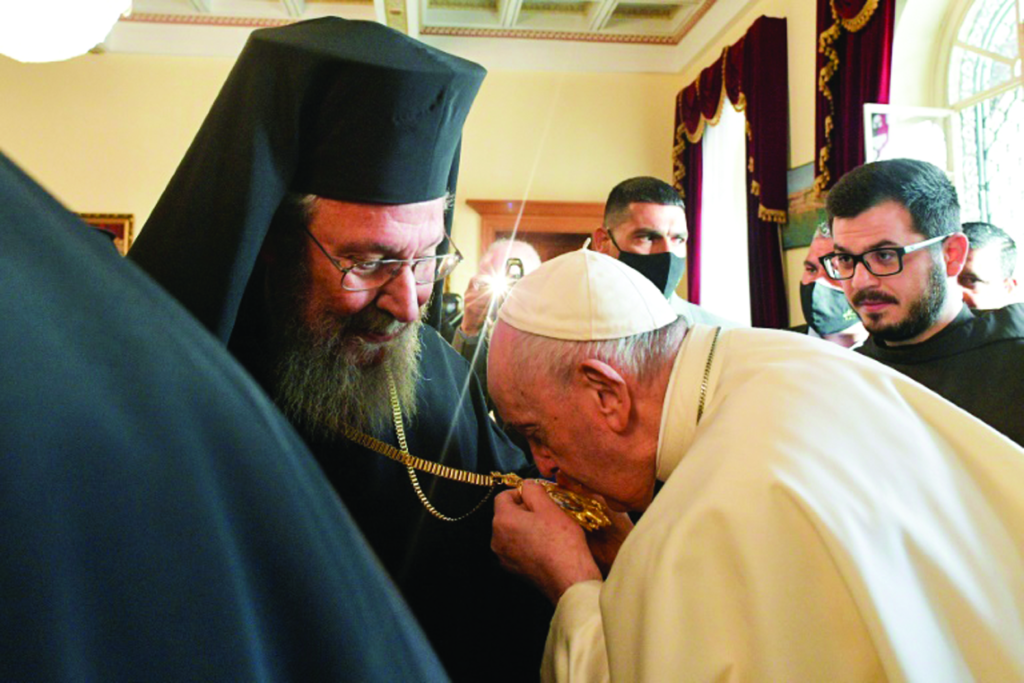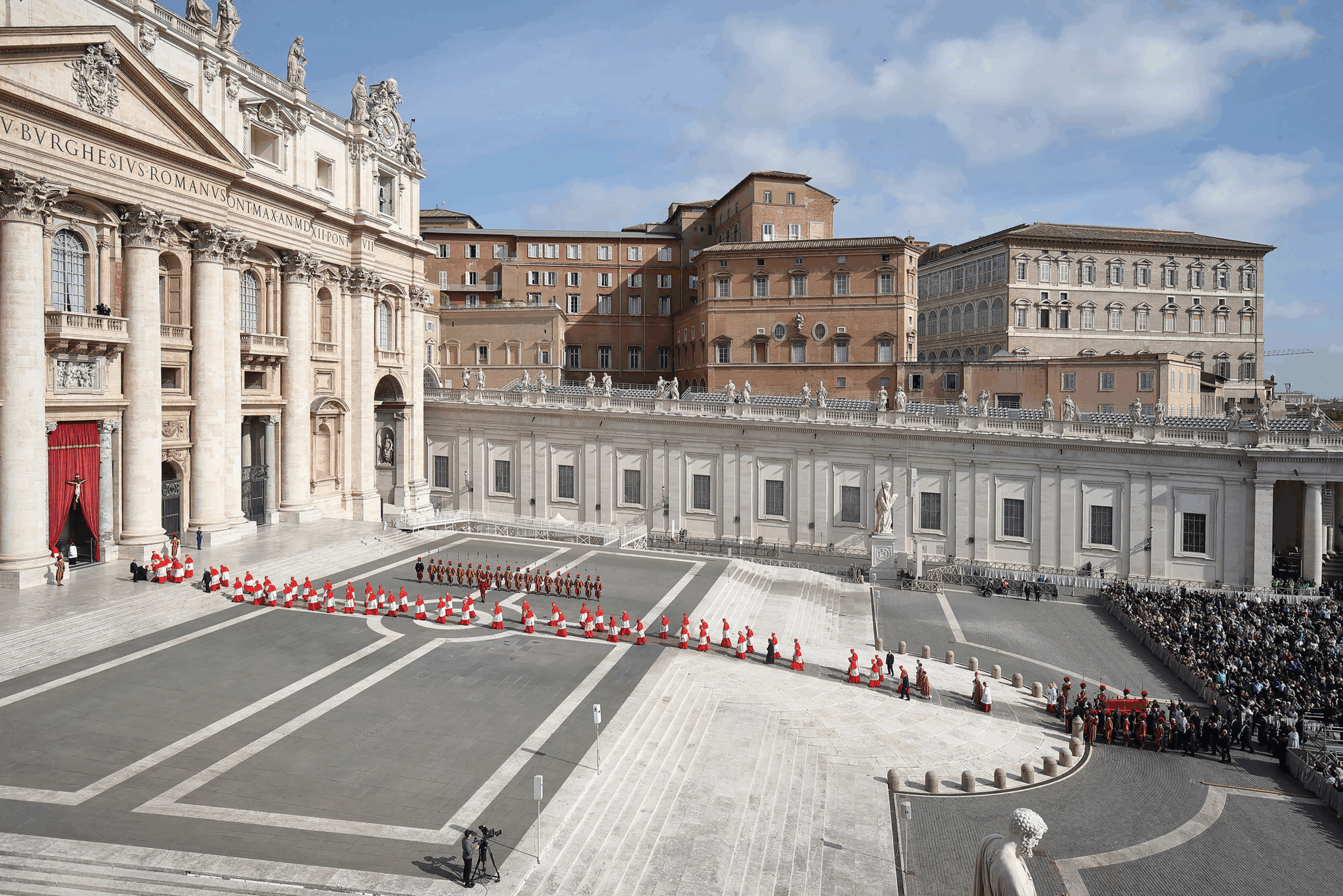By Peter Anderson
The Orthodox Church of Cyprus

December 2021. Pope Francis kisses the cross of Chrysostomos II, the late Greek Orthodox Archbishop of Cyprus, who died of cancer on November 7, 2022, at the age of 81
The island of Cyprus, located in the Mediterranean Sea south of Turkey, has apostolic roots dating back to apostolic times. St. Paul preached there with St. Barnabas in approximately 45 AD and converted the proconsul Sergius Paulus. St. Barnabas was born in Cyprus and according to tradition was later martyred there. Three bishops from Cyprus attended the first ecumenical council at Nicaea in 325. The third ecumenical council held in Ephesus in 431 rejected the claim of the Bishop of Antioch over Cyprus and ruled that the bishops of Cyprus, according to the canons and ancient custom, had “the right of performing for themselves the ordination of their excellent bishops.” Thus, the Church of Cyprus can point to an ecumenical council as establishing its autocephalous or completely self-governing status.
The Church of Cyprus used Greek and followed the Byzantine rite of Constantinople.
However, in 1191, King Richard the Lionheart conquered Cyprus as a result of some of his crusader fleet being shipwrecked on the island and the Cypriot ruler refusing to release the crusaders. Richard subsequently gave Cyprus to the French Lusignan family which ruled it until 1489 when the island was ceded to Venice. Under the rule of the House of Lusignan and the Venetians, the native Greek Cypriots were reduced to a class of serfs and laborers, and their Orthodox clergy became subject to Latin bishops.
Cyprus was conquered by the Ottoman Empire in 1571 and remained under Ottoman control until 1878 when it came under British control.
The plight of the Orthodox Cypriots improved under Ottoman rule. The Catholic Church was expelled from Cyprus. The Orthodox archbishop of Cyprus was recognized as the sole representation of the Greek Cypriot population before the Ottoman court. In modern times the Orthodox archbishop of Cyprus has played a crucial role in the history of Cyprus. Archbishop Makarios III assumed his office in 1950 and led the fight for independence from Britain. He served as the first president of Cyprus from 1960 to 1977. Makarios had many challenges including a Turkish invasion of the island in 1974. Since that time, the island has been divided by a “green line” separating the larger Greek-speaking part and a smaller Turkish part.
Two Popes have now visited Cyprus — Pope Benedict XVI in 2010 and Pope Francis in 2021. On both occasions the pope was warmly greeted by Archbishop Chrysostomos II, the primate of the Orthodox Church of Cyprus. However, some of the Cypriot bishops boycotted these meetings, perhaps due in part to historical animosities arising from the Catholic occupation in the Middle Ages.
In October 2020, Archbishop Chrysostomos II recognized the Orthodox Church of Ukraine which was formed in 2018 with the blessing of Ecumenical Patriarch Bartholomew. This recognition was subsequently supported by a majority of the bishops of the Cyprus Church’s Holy Synod. However, this incurred the ire of the Moscow Patriarchate which severed eucharistic communion with the archbishop.
Archbishop Chrysostomos died of cancer on November 7, 2022, at the age of 81. The Church of Cyprus uses an unusual procedure for electing a new archbishop. First, the faithful who are Cypriot Orthodox, age 18 or over, will vote for their favorite candidate. As of this writing, there are six candidates, and the election has been set for December 18, 2022. The Church’s Holy Synod will then elect the new archbishop from the three candidates who received the most votes in the election by the faithful. Some of the candidates have had excellent ecumenical relations with the Catholic Church, but one candidate boycotted both papal meetings.






Facebook Comments